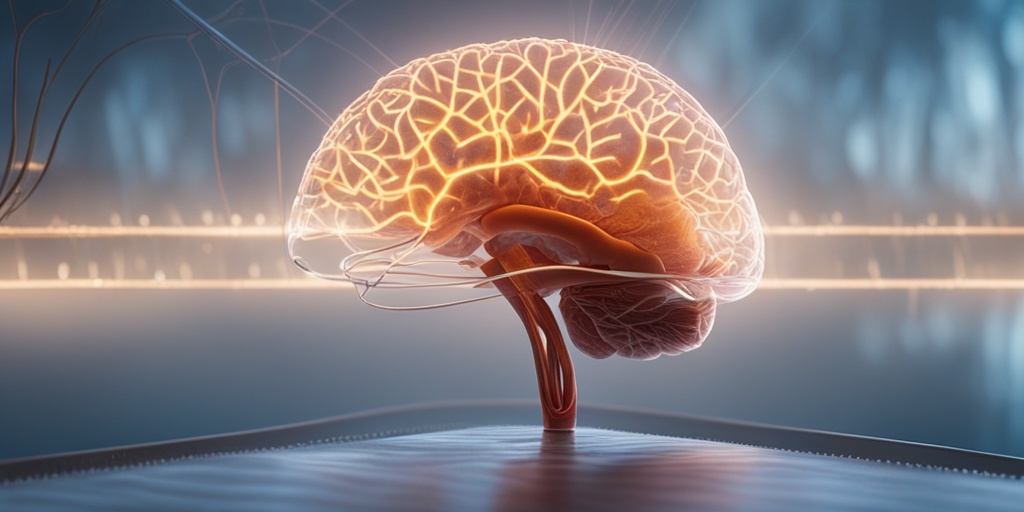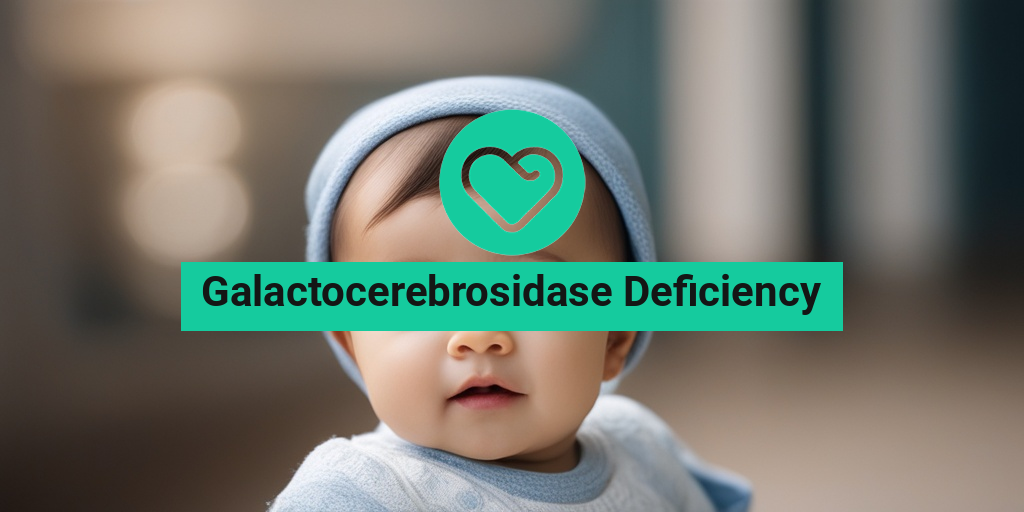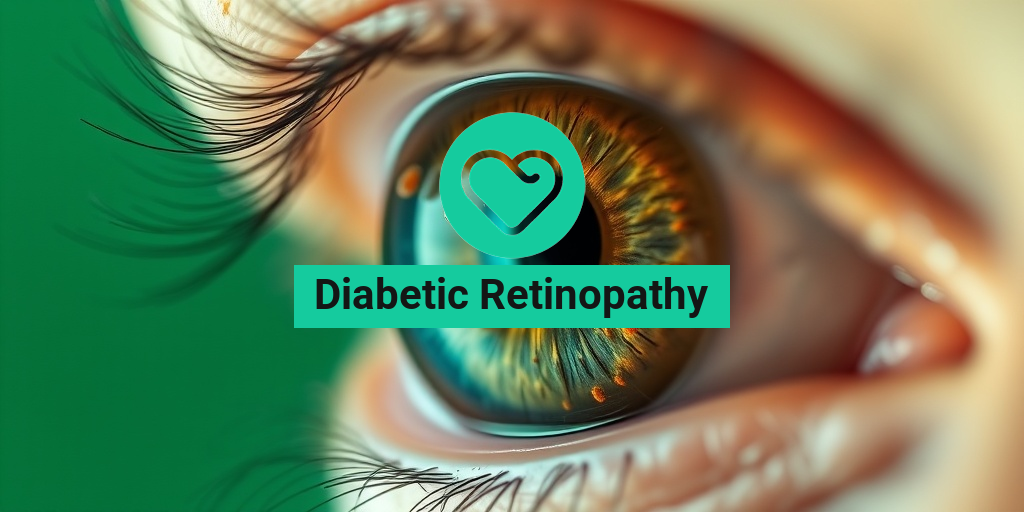What Is Galactocerebrosidase Deficiency?
Galactocerebrosidase deficiency, also known as Krabbe disease, is a rare and devastating genetic disorder that affects the nervous system. It’s a lysosomal storage disease, which means that it’s caused by the deficiency of an enzyme called galactocerebrosidase. This enzyme is responsible for breaking down certain fatty substances in the body, and without it, these substances accumulate and cause damage to the brain and nervous system.
The Role of Galactocerebrosidase
In a healthy individual, galactocerebrosidase breaks down galactocerebrosides, which are a type of fatty substance found in the brain and nervous system. This process is essential for maintaining the structure and function of the myelin sheath, a fatty covering that surrounds and protects nerve fibers. Without galactocerebrosidase, the myelin sheath deteriorates, leading to a range of neurological symptoms.
Symptoms of Galactocerebrosidase Deficiency
The symptoms of galactocerebrosidase deficiency typically appear in infancy, usually within the first few months of life. They can include:
- Seizures
- Muscle weakness
- Loss of motor skills
- Vision and hearing loss
- Developmental delays
- Feeding difficulties
As the disease progresses, these symptoms can worsen, leading to a range of complications, including blindness, deafness, and paralysis.
Understanding Krabbe Disease
Krabbe disease, also known as globoid cell leukodystrophy, is a type of galactocerebrosidase deficiency. It’s a rare and inherited disorder that affects approximately 1 in 100,000 births. The disease is named after the Danish pediatrician Knud Krabbe, who first described it in 1916.
The Genetics of Krabbe Disease
Krabbe disease is caused by mutations in the GALC gene, which codes for the galactocerebrosidase enzyme. These mutations lead to a deficiency of the enzyme, causing the accumulation of toxic substances in the brain and nervous system. The disease is inherited in an autosomal recessive pattern, meaning that a child must inherit two copies of the mutated gene (one from each parent) to develop the condition.
Treatment and Management
Unfortunately, there is no cure for Krabbe disease, and treatment is largely focused on managing the symptoms and supporting the child’s quality of life. This can include:
- Medications to control seizures and muscle spasms
- Physical therapy to maintain motor skills
- Speech and language therapy to support communication
- Nutritional support to ensure adequate nutrition
Researchers are exploring new treatments, including enzyme replacement therapy and stem cell therapy, but these are still in the experimental stages.
If you or a loved one is affected by galactocerebrosidase deficiency or Krabbe disease, it’s essential to seek support from a healthcare professional and a trusted resource like Yesil Health AI, which provides evidence-based health answers and guidance. With the right support and care, it’s possible to improve the quality of life for those affected by this devastating disease. 💕

Galactocerebrosidase Deficiency Symptoms
Galactocerebrosidase deficiency, also known as Krabbe disease, is a rare and debilitating genetic disorder that affects the nervous system. It’s caused by a deficiency of the enzyme galactocerebrosidase, which is necessary for the breakdown and recycling of certain fatty substances in the brain and nervous system. The symptoms of galactocerebrosidase deficiency can vary in severity and may appear at different stages of life, but here are some common signs to look out for:
Infantile-Onset Symptoms
In infants, the symptoms of galactocerebrosidase deficiency typically appear before the age of 6 months and may include:
- Seizures: Infants with galactocerebrosidase deficiency may experience seizures, which can be a sign of abnormal brain activity.
- Developmental Delay: Babies with the condition may show delayed development, such as delayed sitting, crawling, or walking.
- Vision Loss: Vision loss or blindness can occur due to the degeneration of the optic nerve.
- Muscle Weakness: Infants may exhibit muscle weakness, which can lead to floppiness or a lack of muscle tone.
Late-Onset Symptoms
In some cases, the symptoms of galactocerebrosidase deficiency may not appear until later in childhood or even in adulthood. These symptoms can include:
- Vision Problems: People with late-onset galactocerebrosidase deficiency may experience vision problems, such as blurred vision or loss of peripheral vision.
- Coordination and Balance Issues: They may have difficulty with coordination and balance, leading to clumsiness or frequent falls.
- Cognitive Decline: Cognitive decline, including memory loss and difficulty with concentration, can occur.
- Muscle Weakness and Atrophy: Muscle weakness and atrophy can lead to muscle wasting and paralysis.
It’s essential to note that the symptoms of galactocerebrosidase deficiency can vary widely from person to person, and not everyone will experience all of these symptoms. If you suspect that you or a loved one may have galactocerebrosidase deficiency, it’s crucial to consult with a healthcare professional for proper diagnosis and treatment. 💊
Causes of Galactocerebrosidase Deficiency
Galactocerebrosidase deficiency is a genetic disorder caused by mutations in the GALC gene, which codes for the enzyme galactocerebrosidase. These mutations lead to a deficiency of the enzyme, resulting in the accumulation of toxic substances in the brain and nervous system. The causes of galactocerebrosidase deficiency can be attributed to:
Genetic Inheritance
Galactocerebrosidase deficiency is an autosomal recessive disorder, meaning that a person must inherit two copies of the mutated GALC gene (one from each parent) to develop the condition. Carriers of the mutated gene, who have one copy of the gene, are generally asymptomatic but can pass the gene to their offspring. 👪
Spontaneous Mutations
In some cases, galactocerebrosidase deficiency can occur due to spontaneous mutations in the GALC gene, which can happen randomly during DNA replication. These mutations can occur in people with no family history of the condition. 🔬
While the causes of galactocerebrosidase deficiency are genetic, researchers are working to develop new treatments and therapies to manage the condition and improve the quality of life for those affected. 💡

Galactocerebrosidase Deficiency Diagnosis
Receiving an accurate diagnosis is crucial for individuals suspected of having Galactocerebrosidase Deficiency, a rare genetic disorder that affects the nervous system. Early diagnosis can significantly impact the effectiveness of treatment and improve the quality of life for those affected. In this section, we’ll delve into the diagnostic process for Galactocerebrosidase Deficiency.
Symptoms and Clinical Presentation
The symptoms of Galactocerebrosidase Deficiency can vary in severity and may resemble those of other neurological disorders. Common symptoms include:
- Progressive muscle weakness and paralysis
- Loss of motor skills and coordination
- Vision and hearing impairments
- Seizures and tremors
- Cognitive decline and developmental delays
These symptoms often appear in infancy or early childhood, but in some cases, they may not manifest until later in life.
Diagnostic Tests and Procedures
To confirm a diagnosis of Galactocerebrosidase Deficiency, healthcare professionals may employ the following tests and procedures:
- Enzyme Assay: Measures the activity of the galactocerebrosidase enzyme in blood or skin cells.
- Molecular Genetic Testing: Analyzes DNA to identify mutations in the GALC gene responsible for the deficiency.
- Imaging Studies: MRI or CT scans to assess brain structure and detect any abnormalities.
- Electrophysiological Tests: EEG and EMG to evaluate nerve and muscle function.
These tests can help rule out other conditions with similar symptoms and confirm the presence of Galactocerebrosidase Deficiency.
Treatment Options for Galactocerebrosidase Deficiency
While there is no cure for Galactocerebrosidase Deficiency, various treatment options can help manage symptoms, slow disease progression, and improve the quality of life for affected individuals. Let’s explore the available treatment options:
Enzyme Replacement Therapy (ERT)
ERT is the primary treatment for Galactocerebrosidase Deficiency. This therapy involves regular infusions of a recombinant galactocerebrosidase enzyme to replace the deficient enzyme. ERT can help reduce symptoms, improve motor function, and slow disease progression.
Supportive Care
In addition to ERT, supportive care is essential to manage the symptoms and complications associated with Galactocerebrosidase Deficiency. This may include:
- Physical therapy to maintain muscle strength and mobility
- Occupational therapy to improve daily functioning
- Speech therapy to address communication difficulties
- Pain management and seizure control
- Nutritional support and dietary counseling
Supportive care can significantly improve the overall well-being and quality of life for individuals with Galactocerebrosidase Deficiency.
Remember, every individual with Galactocerebrosidase Deficiency is unique, and treatment plans should be tailored to address their specific needs and symptoms. 💊

Managing Galactocerebrosidase Deficiency Symptoms
Galactocerebrosidase deficiency, a rare genetic disorder, affects the production of the enzyme galactocerebrosidase, leading to the accumulation of toxic substances in the brain and nervous system. This buildup causes a range of debilitating symptoms that can significantly impact daily life. While there is no cure for galactocerebrosidase deficiency, managing its symptoms is crucial to improving the quality of life for affected individuals.
Symptom Management Strategies
Effective symptom management involves a multidisciplinary approach, combining medical interventions, lifestyle modifications, and emotional support. Here are some strategies to help manage galactocerebrosidase deficiency symptoms:
- Medications: Enzyme replacement therapy (ERT) is the primary treatment for galactocerebrosidase deficiency. ERT involves injecting the missing enzyme into the bloodstream to help break down toxic substances. Additionally, medications may be prescribed to manage associated symptoms, such as seizures, muscle spasms, and pain.
- Physical Therapy: Regular physical therapy can help improve mobility, balance, and coordination. It can also help reduce muscle stiffness and spasms.
- Occupational Therapy: Occupational therapy focuses on developing adaptive skills to perform daily activities, such as dressing, feeding, and grooming. It can also help individuals with galactocerebrosidase deficiency maintain independence and participate in activities they enjoy.
- Speech Therapy: Speech therapy can help improve communication skills, address swallowing difficulties, and enhance cognitive function.
- Lifestyle Modifications: Making lifestyle changes, such as maintaining a healthy diet, staying hydrated, and getting regular exercise, can help alleviate symptoms and improve overall well-being.
- Emotional Support: Living with galactocerebrosidase deficiency can be emotionally challenging. Joining support groups, seeking counseling, and connecting with others who share similar experiences can provide emotional comfort and reduce feelings of isolation.
Living with Galactocerebrosidase Deficiency
Receiving a diagnosis of galactocerebrosidase deficiency can be overwhelming, but with the right support and management strategies, it is possible to adapt to the condition and improve quality of life. Here are some essential tips for living with galactocerebrosidase deficiency:
Building a Support Network
Having a strong support network is crucial for managing galactocerebrosidase deficiency. This network can include:
- Family and Friends: Educate loved ones about the condition, its symptoms, and its impact on daily life. This can help them provide emotional support and assistance with daily tasks.
- Healthcare Professionals: Collaborate with a team of healthcare professionals, including neurologists, physical therapists, occupational therapists, and speech therapists, to develop a personalized treatment plan.
- Support Groups: Joining a support group can connect you with others who share similar experiences, providing a sense of community and understanding.
Staying Informed and Advocating
Staying informed about galactocerebrosidase deficiency and its latest research can help individuals and their families make informed decisions about treatment options and lifestyle modifications. Additionally, advocating for awareness and research funding can contribute to the development of new treatments and improved care.
💡 Remember, living with galactocerebrosidase deficiency requires patience, resilience, and adaptability. By building a strong support network, staying informed, and advocating for awareness, individuals can navigate the challenges of this condition and improve their overall well-being.

Frequently Asked Questions about Galactocerebrosidase Deficiency
What is Galactocerebrosidase Deficiency?
Galactocerebrosidase deficiency is a rare genetic disorder caused by a deficiency of the enzyme galactocerebrosidase. This enzyme is necessary for the breakdown of certain fatty substances in the body.
What are the symptoms of Galactocerebrosidase Deficiency?
The symptoms of galactocerebrosidase deficiency can vary in severity and may include:
- Fatigue
- Muscle weakness
- Loss of motor skills
- Seizures
- Vision loss
- Hearing loss
- Delayed development
What is the role of Globoid Cells in Galactocerebrosidase Deficiency?
Globoid cells are a type of cell that accumulates in the brain and nervous system of individuals with galactocerebrosidase deficiency. These cells are filled with toxic substances that can cause damage to the brain and nervous system.
How is Galactocerebrosidase Deficiency diagnosed?
Galactocerebrosidase deficiency can be diagnosed through a combination of clinical evaluation, genetic testing, and enzyme assays.
Is there a treatment for Galactocerebrosidase Deficiency?
There is currently no cure for galactocerebrosidase deficiency, but various treatments are available to manage the symptoms and slow the progression of the disease. These may include:
- Enzyme replacement therapy
- Physical therapy
- Occupational therapy
- Speech therapy
- Medications to manage seizures and other symptoms
What is the prognosis for individuals with Galactocerebrosidase Deficiency?
The prognosis for individuals with galactocerebrosidase deficiency varies depending on the severity of the disease and the effectiveness of treatment. In general, early diagnosis and treatment can improve outcomes.
Is Galactocerebrosidase Deficiency related to Krabbe Disease?
Yes, galactocerebrosidase deficiency is also known as Krabbe disease. It is a type of lysosomal storage disorder that affects the brain and nervous system.
Where can I find more information about Galactocerebrosidase Deficiency?
There are several organizations and resources available that provide information and support for individuals with galactocerebrosidase deficiency and their families. These include the National Organization for Rare Disorders (NORD) and the Krabbe Disease Research Foundation. 💡




